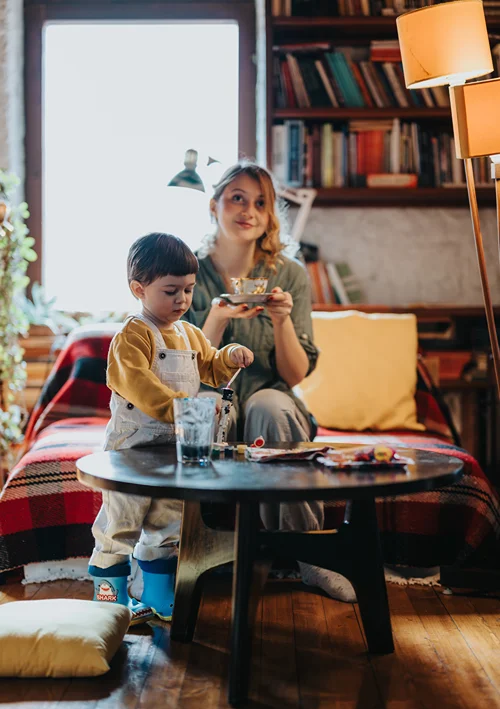A Peaceful Home Begins with Little Moments of Calm
Sometimes, peace doesn’t come from silence — it comes from the small things that make a home feel safe and steady. A familiar smell in the air. A soft glow in the corner. The sound of someone laughing from another room. These are the details that make children feel secure and parents feel grounded after long, noisy days.
The world outside is fast, almost too fast. Kids move from screens to schedules with hardly a pause, and parents juggle more than they ever expected. That’s why the home should be the slow place — the space where everyone can exhale, reconnect, and just be. Creating that kind of calm isn’t about perfection. It’s about intention.
The Mood a Home Holds
Every home has a mood. You can sense it the moment you walk in — whether it’s light and easy or cluttered and restless. The tone of that environment quietly shapes how people feel and behave inside it. For children, it’s especially powerful. A peaceful room helps them sleep, focus, and regulate emotions in ways they can’t quite explain but always feel.
Simple things shift the mood more than we think: soft lighting instead of bright glare, natural textures instead of plastics, a gentle scent that feels familiar rather than overpowering. These things whisper calm into the corners of a house without anyone noticing. They don’t just decorate the space — they shape its heartbeat. For more on how home environments influence children’s emotions and development, see Harvard Center on the Developing Child.
Scents and Memory
There’s a reason a single smell can pull you back through time. The scent of baked cookies might remind someone of their grandmother’s kitchen. The smell of pine might stir memories of holidays. Scent is emotional — it anchors people in moments.
When families use scent intentionally, they create emotional cues that say, “this is our peaceful time.” A gentle fragrance before bedtime or study time helps children link that scent to calm and focus. Over time, that association becomes almost automatic — a quiet reset button for busy minds. Research shows that aromatherapy can ease stress and improve mood — see Cleveland Clinic’s guide.
Small Family Rituals
Peace at home often comes from rituals, not rules. Maybe it’s lighting a candle during dinner. Maybe it’s reading together before bed. These tiny habits might not look like much, but they tell children that home is a steady place. They build patterns of comfort that last long after the day is done.
Even the act of lighting a candle can become symbolic — a small spark that marks a shift from the noise of the world to the stillness of home. Parents who make space for these slow rituals often notice that their kids mirror the same calm in other parts of life.
Finding Calm Through Scent and Light
It’s amazing how quickly a room changes when you soften its light and add a little scent. The right fragrance can make a room feel like it’s breathing again. Something as simple as vintage barrel scented candles can help create that gentle transformation. Their rustic barrel design brings a cozy, nostalgic look, while the scents fill the air in a way that feels natural and comforting. Many families use them during evening routines or quiet reading time to help everyone unwind.
These candles aren’t just decoration — they’re reminders that peace can be intentional. That slowing down can be as easy as lighting a small flame and letting its warmth pull the family together for a moment.
Children Learn Calm by Watching
Kids rarely learn peace from being told to calm down — they learn it by seeing it lived. When parents slow their pace, speak softly, and create soothing spaces, children follow suit. They begin to associate that kind of stillness with safety. They learn that balance doesn’t come from control, but from care.
Parents can talk about it too — how certain smells make us feel, how light affects our energy, how being present can change our mood. These conversations give kids a language for something most adults still struggle to name: emotional awareness.
Where Safety and Calm Meet
In the end, a peaceful home is also a safe home. Children thrive in predictability, warmth, and gentle sensory experiences. When the environment feels calm, they know they can trust it — and the people within it.
Peace doesn’t come from big gestures. It’s found in the quiet routines, the candlelight at dinner, the sound of wind through an open window, or the scent that lingers long after bedtime. Those moments remind families that home is more than walls and furniture — it’s the feeling that you’re exactly where you need to be.
And if a small flame in a vintage barrel can help you find that feeling, maybe peace was never as far away as it seemed.






